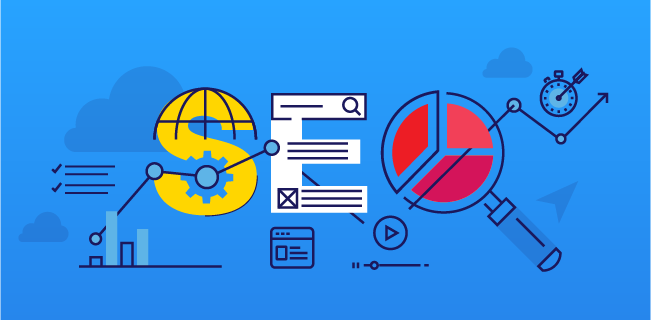Recognizing What Is Ruled Out a Default Medium in Google Analytics: Insights
Recognizing What Is Ruled Out a Default Medium in Google Analytics: Insights
Blog Article
Believing Outside the Box: Leveraging Non-traditional Mediums to Maximize Google Analytics Efficiency
In the world of electronic advertising and marketing, the quest for improved Google Analytics efficiency has become a strategic imperative for organizations seeking to refine their online presence. Traditional techniques typically drop brief in recording the full range of customer communications and actions. However, by exploring unconventional tools as opportunities of information collection, a brand-new realm of opportunities emerges. These undiscovered areas provide a wide range of untapped understandings that could potentially revolutionize the means we comprehend and optimize our electronic methods.
One-of-a-kind Data Resources

CRM systems, for instance, can offer insights right into individual client communications, acquisition background, and preferences, which can be incorporated with Google Analytics information to create more personalized marketing methods. Social media platforms supply beneficial data on user demographics, passions, and involvement metrics, permitting services to assess the efficiency of their social media campaigns and maximize web content for much better performance. Email marketing information, including open rates, click-through rates, and conversion metrics, can also be leveraged to track customer involvement and actions past internet site interactions captured by Google Analytics. By leveraging these special data resources, companies can fine-tune their strategies, improve targeting efforts, and enhance total Google Analytics performance.
Social Media Site Insights

Furthermore, social networks analytics tools enable companies to track essential performance signs, display campaign efficiency, and determine the influence of their on-line activities. Comprehending the demographics of followers, recognizing popular material styles, and evaluating involvement levels can aid businesses tailor their advertising techniques for better results.
Offline Marketing Assimilation
Incorporating offline marketing approaches with electronic analytics can improve general project efficiency and supply an extra extensive understanding of customer actions. what is not considered a default medium in google analytics. By bridging the space in between online and offline efforts, services can track the influence of conventional advertising and marketing networks such as print advertisements, TV commercials, direct-mail advertising, and check out this site occasions on their online existence

Furthermore, implementing telephone call radar for offline marketing tasks allows organizations to record useful information on consumer inquiries produced via printed advertisements or materials (what is not considered a default medium in google analytics). By assessing telephone call information along with on the internet metrics in Google Analytics, companies can gain much deeper insights right into the client trip and enhance advertising and marketing methods for enhanced efficiency across all networks
IoT and Wearable Innovation
Using IoT and wearable technology in electronic analytics can revolutionize information collection and customer understandings for businesses looking for a much deeper understanding of individual actions patterns. These cutting-edge innovations supply a seamless means to collect real-time data from different touchpoints. IoT devices can track individual communications with products or solutions, supplying valuable details on usage patterns and choices. Wearable technology, such as smartwatches or physical fitness trackers, can offer understandings into individual tasks, health metrics, and even location information.
Gamification Strategies
The implementation of gamification techniques in electronic analytics presents an ingenious technique to boosting customer interaction and driving workable understandings for organizations. By including game-like components such as points, badges, leaderboards, and compensates into the analytics user interface, business can encourage customers to interact a lot more often and meaningfully with the information.
Gamification motivates individuals to discover different features of the analytics platform, uncovering valuable insights that may have otherwise gone unnoticed. Through interactive challenges and progression tracking, users are incentivized to dive much deeper into the information, leading to increased time invested in the system and a higher chance of discovering vital fads or patterns.
Additionally, gamification can promote a feeling of competitors among users, stimulating them to pursue greater efficiency and interaction levels. This affordable spirit can drive enhanced user fostering prices and a more comprehensive application of the analytics devices available. Eventually, by leveraging gamification strategies in electronic analytics, services can produce a more interesting and efficient environment for customers, leading to even more educated decision-making and enhanced total performance.
Final Thought
To conclude, leveraging unusual mediums such as one-of-a-kind data sources, social media sites insights, offline advertising and marketing integration, IoT and wearable innovation, and gamification approaches can optimize Google Analytics efficiency. By assuming outside the box and checking out these alternate resources of data, services can obtain valuable insights and boost their total marketing techniques. It is very important for business to continually check out brand-new means to gather best site data and examine it in order to remain in advance in the ever-evolving electronic landscape.
By including data from resources such as client partnership monitoring (CRM) systems, social media systems, and email advertising and marketing projects, companies can obtain an extra comprehensive understanding of their audience behavior and engagement patterns. Social media systems use beneficial data on customer demographics, rate of interests, and interaction metrics, permitting services to assess the efficiency of their social media projects and enhance material for better efficiency. By leveraging these one-of-a-kind data resources, services can fine-tune their methods, enhance targeting initiatives, and enhance overall Google Analytics efficiency.
Checking out social media insights can offer businesses with important data on customer demographics, passions, and interaction metrics, permitting try this website for informed decision-making and critical optimization of advertising and marketing efforts. By thinking outside the box and checking out these different resources of data, companies can get useful insights and boost their general advertising strategies.
Report this page